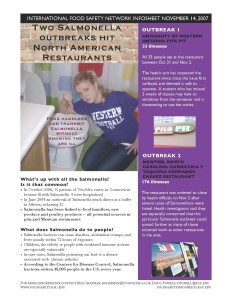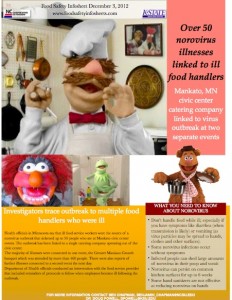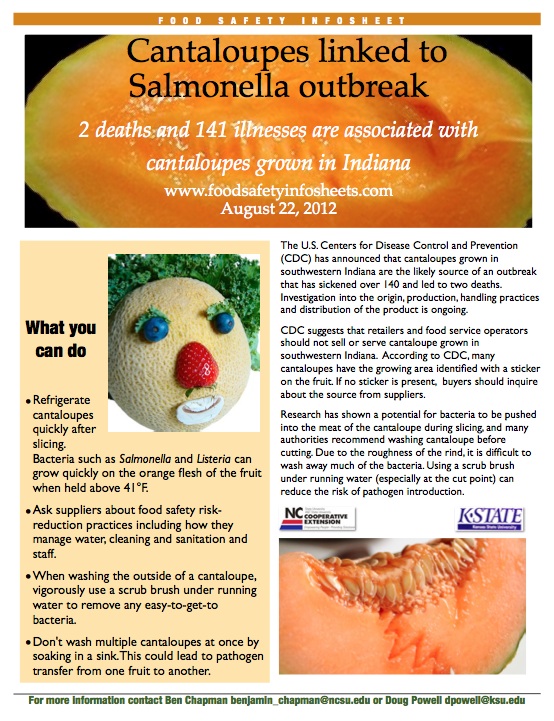About 2003, Chapman and I were drinking beer after hockey, and thought, if entertainment pages were posted above urinals, why can’t we do the same with food safety information.
 So the manager at the bar above the rink agreed (probably because we were regulars, and used the urinal a lot) and food safety infosheets were born.
So the manager at the bar above the rink agreed (probably because we were regulars, and used the urinal a lot) and food safety infosheets were born.
We got a unique opportunity to study if they actually worked in a bunch of food service establishments (self-reported surveys suck).
This has been Chapman’s baby all along, and now that he’s a big-shot prof, he don’t do them too much.
That’s fine, we’ve always been more about ideas – a think piece – and others can implement them.
This piece of nostalgia was prompted by a report that South Canterbury’s public toilets have become a novel location for pitching road safety messages to tourist drivers.
Maps in public toilets showing crash sites over the past five years are giving safety warnings in Chinese, Indian, Japanese and Filipino (we did them in English, French, Spanish, some Chinese, some Portugese, depending on what students were around).
The maps, placed above urinals and on the inside of toilet doors, also link readers to websites with road safety messages in 14 languages.
Tourists are being given the safety warnings and driver tips at 60 public toilets around South Canterbury.
South Canterbury Road Safety co-ordinator Daniel Naude said the signs were mostly aimed at foreign tourists, and toilets provided a captive audience.
It was difficult to get people to read road safety information, but he realised signs in toilets could make for good reading for “30 seconds when there’s nothing to do.”
Duh.
Assessment of Food Safety Practices of Food Service Food Handlers: Testing a Communication Intervention
Chapman, Benjamin; Eversley, Tiffany; Filion, Katie; MacLaurin, Tanya; Powell, Douglas
Journal of Food Protection, Volume 73, Number 6, June 2010 , pp. 1101-1107
Globally, foodborne illness affects an estimated 30% of individuals annually. Meals prepared outside of the home are a risk factor for acquiring foodborne illness and have been implicated in up to 70% of traced outbreaks.
 The Centers for Disease Control and Prevention has called on food safety communicators to design new methods and messages aimed at increasing food safety risk-reduction practices from farm to fork. Food safety infosheets, a novel communication tool designed to appeal to food handlers and compel behavior change, were evaluated. Food safety infosheets were provided weekly to food handlers in working food service operations for 7 weeks. It was hypothesized that through the posting of food safety infosheets in highly visible locations, such as kitchen work areas and hand washing stations, that safe food handling behaviors of food service staff could be positively influenced. Using video observation, food handlers (n = 47) in eight food service operations were observed for a total of 348 h (pre- and postintervention combined). After the food safety infosheets were introduced, food handlers demonstrated a significant increase (6.7%, P < 0.05, 95% confidence interval) in mean hand washing attempts, and a significant reduction in indirect cross-contamination events (19.6%, P < 0.05, 95% confidence interval). Results of the research demonstrate that posting food safety infosheets is an effective intervention tool that positively influences the food safety behaviors of food handlers.
The Centers for Disease Control and Prevention has called on food safety communicators to design new methods and messages aimed at increasing food safety risk-reduction practices from farm to fork. Food safety infosheets, a novel communication tool designed to appeal to food handlers and compel behavior change, were evaluated. Food safety infosheets were provided weekly to food handlers in working food service operations for 7 weeks. It was hypothesized that through the posting of food safety infosheets in highly visible locations, such as kitchen work areas and hand washing stations, that safe food handling behaviors of food service staff could be positively influenced. Using video observation, food handlers (n = 47) in eight food service operations were observed for a total of 348 h (pre- and postintervention combined). After the food safety infosheets were introduced, food handlers demonstrated a significant increase (6.7%, P < 0.05, 95% confidence interval) in mean hand washing attempts, and a significant reduction in indirect cross-contamination events (19.6%, P < 0.05, 95% confidence interval). Results of the research demonstrate that posting food safety infosheets is an effective intervention tool that positively influences the food safety behaviors of food handlers.







 temperaturas mayores a los 41°F (5ºC).
temperaturas mayores a los 41°F (5ºC).
 – Recetas probadas, y direcciones para enlatar de forma segura se encuentran en el “National Center for Home Food:” nchfp.uga.edu.
– Recetas probadas, y direcciones para enlatar de forma segura se encuentran en el “National Center for Home Food:” nchfp.uga.edu. – Tres empleados también fueron afectados por dicho brote.
– Tres empleados también fueron afectados por dicho brote.